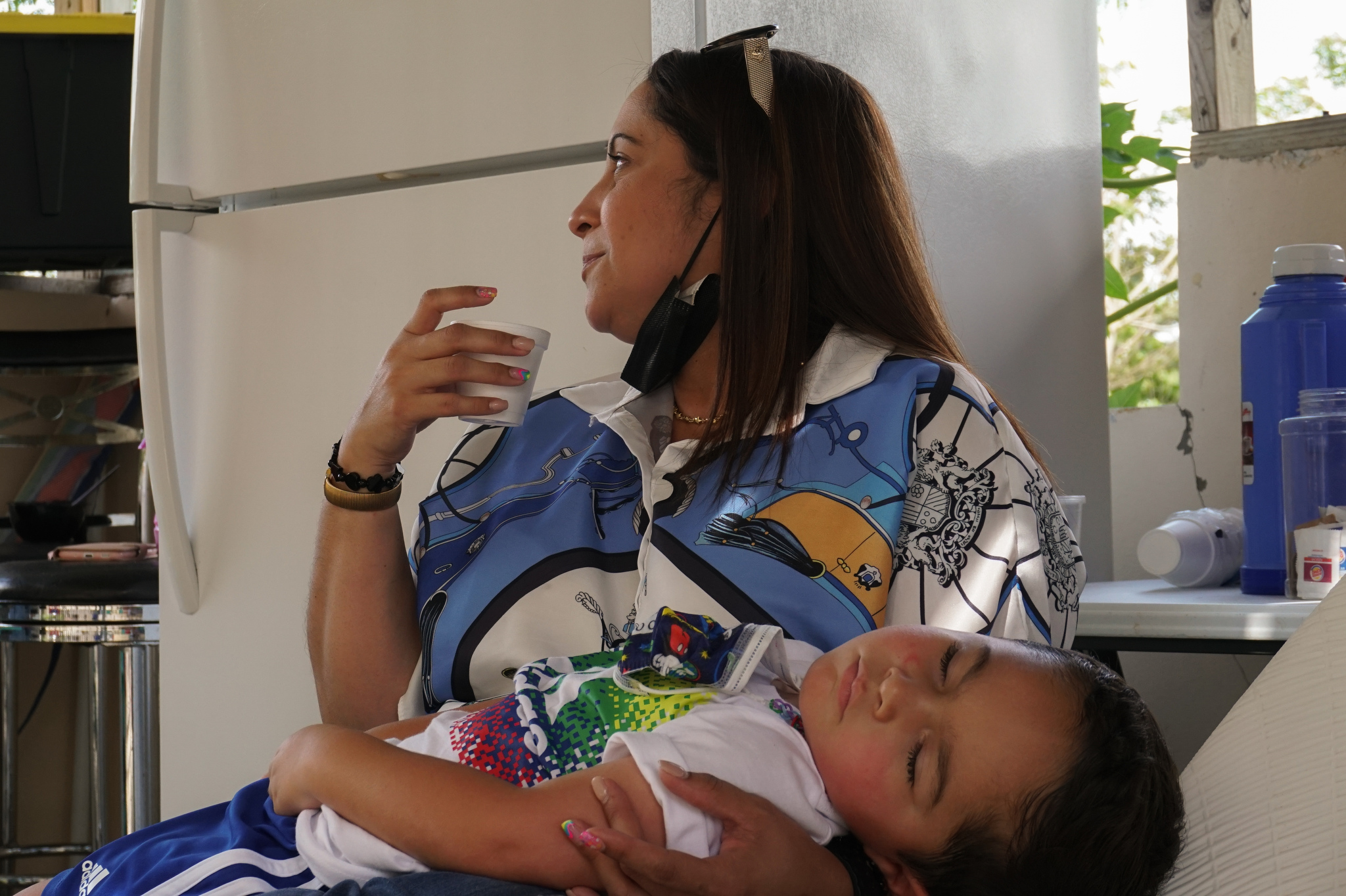
Coraly M. Cruz Mejías, GPJ Puerto Rico
In the Goyito Muñiz sector of Puerto Rico, residents are trying to block construction of antennas and communication towers.
AGUADA, PUERTO RICO — Wilbert Silva has lived in the Goyito Muñiz sector, a mountainous area in the Aguada municipality on the western edge of Puerto Rico, for the past 60 years.
In 2016, he learned that land close to his house had been sold, and that Innovattel, a company that installs telecommunication towers and antennas, planned to build a tower that would loom over the area.
Silva was dismayed. The Goyito Muñiz community is small – just around 300 families. Still, why hadn’t they been notified that this tower would be built practically in their backyards? Why hadn’t they been consulted?
“They didn’t come here to talk with the community,” Silva says of Innovattel. “They came here to impose themselves.”
Silva is not the only person who has watched the construction of antennas and communication towers with frustration. Across Puerto Rico, 30 communities have come together to express their opposition to these projects and demand participation in the official permitting process. They’ve formed a group, Frente de Comunidades Contra la Proliferación de Antenas en Puerto Rico (Community Front Against the Proliferation of Antennas in Puerto Rico, or FCCPA). Together, they have lobbied government officials, filed lawsuits, and even blockaded building sites, forcing construction to a halt.
The standoff has highlighted the way that large-scale telecom projects in Puerto Rico are approved without the ability of local residents to make their voices heard.



“It’s not that we’re opposed to technology,” says Wilson Rivera, a spokesperson for the FCCPA. “What we’re asking for is responsible technology, that things are done responsibly, and we’re asking for participation in the decision-making process.”
Currently, telecom companies must submit permit applications for any antennas or communication towers to Puerto Rico’s Office of Permit Management, as well as the Planning Board, detailing the location and scope of the project. The companies must also complete an environmental impact assessment.
“We don’t build on a site without having the proper endorsements and permits required by both federal and state agencies,” says Juan Cueria, Innovattel’s vice president.
But the law doesn’t require companies to solicit input from local residents except in limited circumstances, such as when a tower would be built in an ecologically sensitive area.
“There is no requirement to carry out a public hearing or any additional process of citizen participation,” says Ian Carlo Serna, president of the Puerto Rico Telecommunications Bureau, the government agency in charge of regulating the telecom industry.
There are about 2,000 communication towers and 20,000 antennas in Puerto Rico, according to the Planning Board. Carlo Serna says that as more and more people and devices connect to the internet and rely on cellular services, the need for robust telecom infrastructure has increased.
“The reality [is that] we live in a connected world,” Carlo Serna says.
Aptemis Rodríguez, Innovattel’s procurement coordinator and site manager, points out that the coronavirus pandemic is also increasing the need for the towers, since people are working and studying from home.
But Rivera says that as a consequence, certain communities have been taken over by towers. In Atalaya, for example, a neighborhood close to the Goyito Muñiz sector, there are 26 communication towers and 264 antennas, says Rivera – about one for every nine residents in the area.



Aguada residents say tower construction has disrupted their lives and placed them in danger.
Ilianette Ruiz, whose home is closest to the tower Innovattel is building in the Goyito Muñiz sector, says heavy machinery destroyed the road to her property.
“My car skidded so many times, sometimes right up to the ravine,” Ruiz says.
She, along with her husband and other residents, filed a lawsuit to try to stop the tower from being built. And in 2019, a court temporarily ordered construction to stop. After the ruling, Innovattel applied for a new permit, which was granted in March 2020.
Ruiz says her family still hopes to force the company to halt construction through legal action. But she, her husband and their 2-year-old son have decided to move until the situation is resolved.
“There was no way we could live like that,” Ruiz says.
Lawsuits against 10 other construction projects are currently pending before the courts, Rivera says. The Senate of Puerto Rico is also considering legislation, submitted in April, that would require telecom projects to include a public hearing process, prohibit towers from being built within 500 meters (547 yards) of inhabited areas, and mandate that companies wait 10 years to resubmit permit applications after a project’s permit is revoked.
María Maldonado Malfregeot, a lawyer for Innovattel, says the company opposes the legislation.
“There are many aspects of that bill that would make it impossible to install antennas in the future,” she says. “It is simply so restrictive that with the topography in Puerto Rico, you would not be able to find a place to install one.”



Local residents have taken matters into their own hands, picketing construction sites and blocking roads.
In December, several Goyito Muñiz residents were arrested for not allowing construction workers access to the tower site near Silva’s house. As the standoff escalates, police often escort construction workers to the building sites.
“We know that they’re coming because [neighbors] start to see police cars,” says Lourdes María Valentín, a local resident.
Carlo Serna, from the Puerto Rico Telecommunications Bureau, says he hopes all sides can reach an understanding, especially considering that telecommunications are an essential service.
Until then, residents are determined to stand their ground.
“As long as the courts are on their side, what can we expect?” says Norman Rosa, Valentín’s husband. “We just have to keep going.”
Coraly Cruz Mejías is a Global Press Journal senior reporter based in Puerto Rico. She specializes in environmental reporting.
TRANSLATION NOTE
Sarah DeVries, GPJ, translated this article from Spanish.







